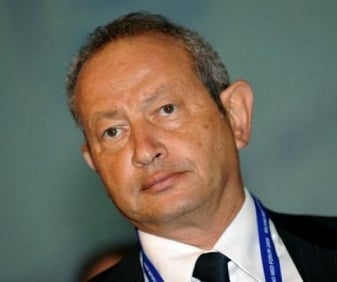CAIRO: The April 6 general strike was an unprecedented turning point in the Egyptian protest movement, concluded a discussion held Monday at the Center for Socialist Studies titled “What next after April 6 and May 4?
El-Dostour journalist Haitham Gabr and Al-Karama editor and Kefaya activist Abdel Halim Qandil discussed the factors which led to the calls for the April 6 and May 4 general strikes and their implications for the future of political and social protest in Egypt.
“I regard April 6 as an unprecedented event in the history of the Egyptian [social] movement, Gabr said.
“It was one of the biggest explosions of anger against the regime and the process of privatization, he continued.
He said that the current wave of protests is the product of a regime unable to respond to an economic crisis.
“April 6 and May 4 were signs of weakness of a regime crippled by the illnesses associated with old age: a regime which has Alzheimer’s, which increases wages by 30 percent one day, forgets, and then increases fuel prices by 40 percent the day after that.
“This regime finds itself in an impossible situation: it cannot contain society’s anger through the use of force as this would compromise its international image but, equally, it does not have any economic solutions to appease this anger, Gabr said.
Gabr attributes current events to the resurgence of the labor movement which began after the December 2006 strike in the Ghazl El-Mahalla factory.
“Mubarak’s regime could not have taken this step except against a background of what has been happening over the last year and half.
“The driving force behind the Egyptian movement is workers, and the driving force behind the workers themselves is the Ghazl El-Mahalla Factory. On April 6 there was huge solidarity with the Ghazl El-Mahalla strike amongst political movements which were inspired by the workers’ movement.
“It is this which led to the widening of the Mahalla strike to a political strike.
While he acknowledged the impact made by the April 6 protest, Gabr was more circumspect about the ability of internet-led activism to initiate credible forms of protest.
“Internet activists don’t have a leader to guide this movement and neither do they have clear objectives or aims. It is this which made ordinary people in the street ask ‘what will we do on April 6? What are we striking for?’
“Mahalla is a microcosm of this: strikes in the Mahalla factory had a clear leadership and defined objectives. It was no surprise on April 6 when residents of Mahalla started congregating around the time of the end of the morning shift: they were looking to the workers to lead them.
“The 20,000 young people on Facebook are expressing their anger but don’t have a leader to guide them and no real forum to express this anger: Facebook is the easiest outlet for it.
Abdel Halim Qandil said that the current crisis has been produced by a regime in its last days.
“We’re at the end of a regime; there is a gap between the end of this regime and its replacement, he said.
He said that 2007 had witnessed a new wave of protest.
“2007 witnessed a rise in social protest spearheaded by the Ghazl El-Mahalla factory. Why Ghazl El Mahalla? Because it is the biggest industrial complex which has as yet managed to escape privatization.
There’s a new spirit of protest which has developed and which was initiated in 2003, he said, when people demonstrated against the invasion of Iraq.
“April 6 was a meeting point of two forms of protest, political and social. It has provided the opportunity to create new leadership.
“Moreover, April 6 was a watershed. It’s possible to say that there was a ‘before’ and ‘after’ the April 6 strike.

